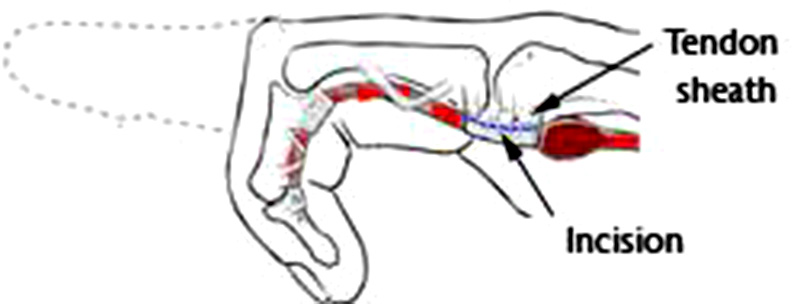Your doctor can diagnose the problem by talking with you and examining your hand. No other testing or x-rays are usually needed to diagnose trigger finger.

Trigger finger is not a dangerous condition. The decision to have surgery is a personal one, based on how severe your symptoms are and whether nonsurgical options have failed. In addition, if your finger is stuck in a bent position, your doctor may recommend surgery to prevent permanent stiffness.
The goal of surgery is to widen the opening of the tunnel so that the tendon can slide through it more easily. This is done on an outpatient basis, usually under local or regional anesthetic.
The surgery is performed through a small incision in the palm or sometimes with the tip of a needle. The tendon sheath tunnel is cut. When it heals back together, the sheath is looser and the tendon has more room to move through it. During surgery, the tendon sheath is cut.
For additional information about treatment, we have included this complete patient eduction sheet as a pdf to view, download and print:

